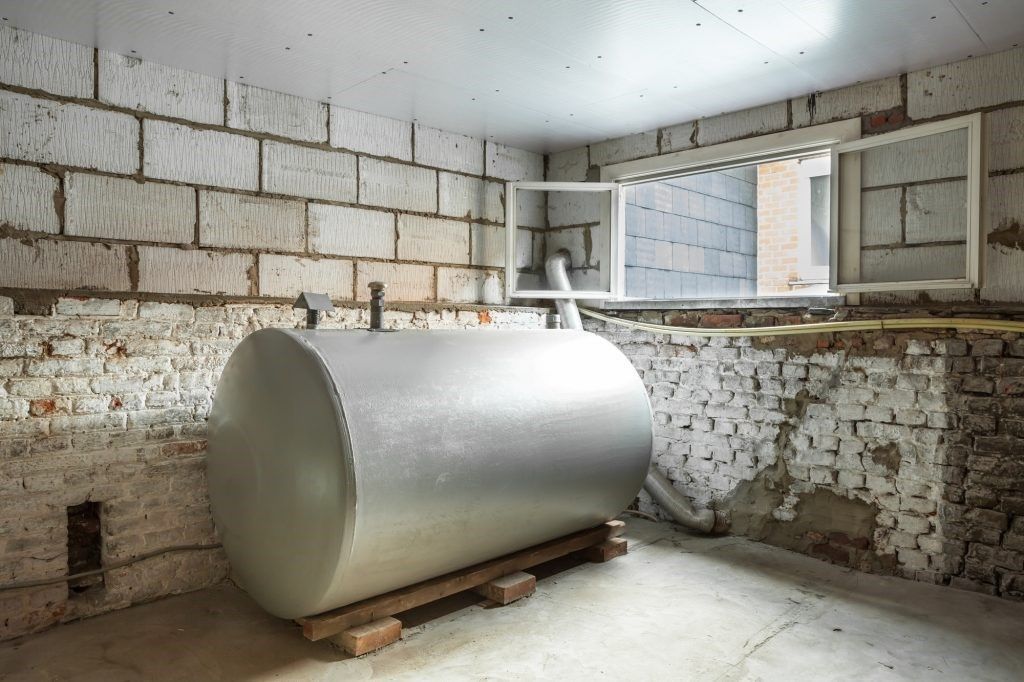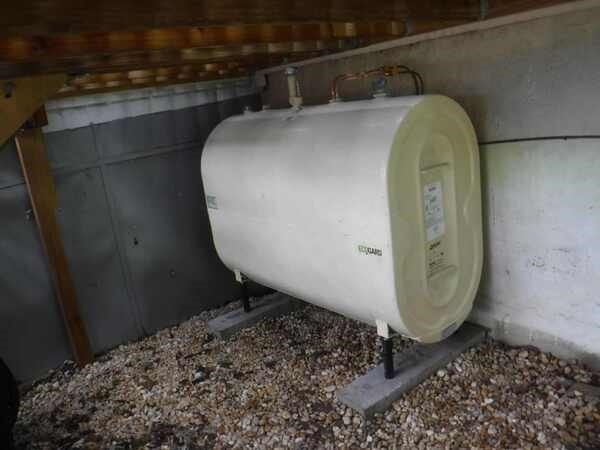Basement Oil Tank Replacement Cost: What to Expect
The basement oil tank replacement cost can vary significantly depending on the size of the tank and the complexity of the installation. To get an accurate estimate, it's best to consult with local contractors who can provide a detailed quote based on your specific needs.
Replacing a basement oil tank isn't the most glamorous of home projects, but it’s a necessary one. While the task can be expensive, knowing what to expect helps in managing costs and avoiding surprises. Let’s dive into what’s involved in replacing your basement oil tank.
Understanding the Costs Involved in Replacing a Basement Oil Tank
Why is replacing a basement oil tank such a significant investment? It boils down to several factors: tank size, material, and installation complexity. Understanding these can help you budget wisely and make informed decisions.
Factors Affecting Basement Oil Tank Replacement Costs
Tank Size and Capacity: Larger tanks usually cost more. The size you choose impacts both performance and price, so get it right for your home and budget.
Material Choices: Steel, plastic, and fiberglass each come with their own cost implications and benefits. Choose the material that suits your needs and budget.
Installation Complexity: Some installations are straightforward, while others can be more complicated. Basement access and local regulations can influence the cost.
Labor Costs and Regional Price Variations: Costs can vary based on your location and the type of oil tank you choose. Labor rates and regional regulations play a big role in the overall expense.
Assessing Your Current Basement Oil Tank
Signs That Your Basement Oil Tank Needs Replacing: Look for rust, leaks, or general wear and tear. These signs can indicate it’s time for a replacement.
Evaluating the Condition of Your Existing Tank: A thorough inspection can help determine if a replacement is necessary or if a repair might suffice.
Determining the Right Time for a Replacement: Replacing your tank before problems escalate can save you from emergency costs.
Types of Basement Oil Tanks
Above Ground vs. Underground Tanks: Each type has distinct advantages and disadvantages. Understand these to choose the best fit for your space.
Choosing the Best Material for Your Basement Oil Tank: Steel, plastic, and fiberglass each offer different durability and cost. Select the material that aligns with your needs.
Benefits and Drawbacks of Each Tank Type: Evaluate the advantages and disadvantages of each type of oil tank. Consider the long-term implications, including installation costs and potential maintenance issues.
Cost Breakdown
Base Cost of a New Basement Oil Tank: The initial price of the tank is just the beginning. Get a clear idea of the base costs before considering additional expenses.
Installation Costs: What’s Included?: Installation costs can encompass more than just labor. Know what’s covered and what might incur extra charges.
Additional Expenses: Permits, Inspections, and Cleanup: Don’t overlook these extra costs when planning the average cost to replace a heating oil tank. Permits, inspections, and post-installation cleanup can add up.
Finding and Comparing Quotes
How to Request Accurate Quotes from Contractors: Gather detailed quotes from multiple contractors to understand market rates. Provide precise information for accurate estimates.
What to Look for in a Comprehensive Quote: Ensure the quote covers all aspects of the job, including tank delivery, installation, and any additional costs.
Comparing Estimates: Key Factors to Consider: Look beyond the total cost when comparing quotes. Evaluate the quality of materials, scope of work, and contractor reputation.
Additional Costs to Consider
Possible Costs for Removing the Old Tank: Be aware of potential extra costs for removing the old tank. Verify if this is included in your quote or if it’s an additional expense.
Dealing with Contaminated Soil or Spills: If your old tank has leaked, there may be costs for cleaning and remediation.
Costs for Upgrading Plumbing or Heating Systems: Sometimes, a tank replacement necessitates updates to your existing plumbing or heating systems, adding to the cost.
Exploring Financing and Payment Options
Available Financing Plans for Basement Oil Tank Replacement: Many contractors offer financing options. Explore these to manage costs more effectively.
Understanding Payment Terms and Conditions: Clarify payment terms before committing. Knowing the payment schedule can aid in budgeting.
How to Use Financing to Manage Upfront Costs: Financing can help spread out the expense of a new oil tank installation. Understand how it fits into your budget and the terms involved.
DIY vs. Professional Installation
The Pros and Cons of DIY Installation: DIY might seem like a cost-saving option, but it can lead to complications if not done correctly.
Why Professional Installation Might Be Worth the Cost: Professionals bring expertise and can ensure the job is done right. Consider the long-term benefits of hiring an expert.
How to Choose a Qualified Installer: Check credentials, read reviews, and ensure the installer is licensed and insured.
Negotiating the Best Price
Tips for Negotiating with Contractors: Don’t hesitate to negotiate. Contractors might offer discounts or be flexible with pricing.
When to Ask for Discounts or Promotions: Timing can be crucial. Look for promotions or ask about discounts, especially when getting multiple quotes.
How to Handle High Quotes and Seek Adjustments: Learn how to negotiate costs when seeking to replace your heating oil tank. If a quote seems too high, discuss it with the contractor. They might adjust the price or offer alternative solutions.
Preparing Your Basement for Replacement
Steps to Prepare Your Basement for Installation: Ensure your basement is ready for the installation of a heating oil tank. Clear the area around the old tank and ensure easy access for the installers. Proper preparation can prevent additional charges.
How to Minimize Disruptions During the Replacement: Plan ahead to avoid disruptions on installation day for your new oil tank. Knowing what to expect can help things go smoothly during the installation of your heating oil tank.
What to Do Before the Installation Begins: Prepare for the installation of your new oil tank. Confirm all details with your contractor and ensure that all necessary permits are in place.
Post-Replacement Considerations
Checking the Quality of Installation: After installation, check that everything is functioning correctly. A thorough inspection can help prevent future issues.
How to Test Your New Tank for Proper Functioning: Test your new tank to ensure it’s working as expected. Address any problems immediately.
Routine Maintenance to Extend the Life of Your Tank: Regular maintenance can extend the life of your tank and help avoid costly repairs.
Customer Service and Support
The Importance of Good Customer Service: Good customer service is essential when replacing an oil tank. Good customer service is vital for handling any issues that arise after installation. Ensure your contractor provides reliable support.
How to Address Post-Installation Issues: Know how to manage any problems with your new tank. A clear process for addressing issues can save time and frustration.
Ensuring You Have a Reliable Warranty and Support: A strong warranty protects you from future costs. Understand what’s covered and how to use it.
Long-Term Cost Management
Calculating Long-Term Savings from a New Tank: A new, more efficient tank can save money on heating costs over time. Evaluate these potential savings related to the cost to replace your heating oil tank.
How Regular Maintenance Can Prevent Future Costs: Regular maintenance can prevent issues and help you avoid unexpected expenses.
The Financial Impact of Upgrading to a More Efficient Tank: Consider how upgrading might affect your overall heating costs and provide long-term savings.
Green and Sustainable Options
Exploring Eco-Friendly Basement Oil Tank Choices: If you’re environmentally conscious, look into sustainable tank options that may offer savings or incentives for replacing an oil tank.
How Sustainable Options Can Affect Costs and Savings: Green tanks might have a higher upfront cost but can offer long-term savings and benefits.
Incentives for Choosing Environmentally Friendly Tanks: Check for rebates or incentives for eco-friendly tanks. These can help offset the initial expense.
Avoiding Common Pitfalls
Common Mistakes in Basement Oil Tank Replacement: Watch for errors such as underestimating costs or choosing subpar materials for your 275 gallon oil tank.
How to Ensure Value for Your Money: Make informed decisions to ensure you’re getting good value for your expenditure.
Learning from Others’ Replacement Experiences: Take lessons from others’ experiences to avoid common pitfalls and make better choices.
Conclusion
Summarizing Key Cost Considerations for Basement Oil Tank Replacement: Recap the main points to keep in mind when planning for a tank replacement.
Final Tips for Managing Your Replacement Budget: Offer concluding advice on managing costs effectively and planning for a smooth replacement.
Planning Ahead for Efficient and Cost-Effective Replacement: Proactive planning can help ensure a cost-effective and efficient replacement process.



